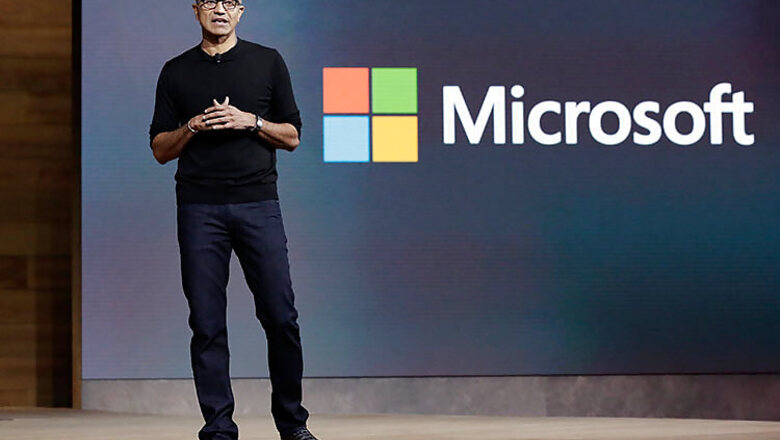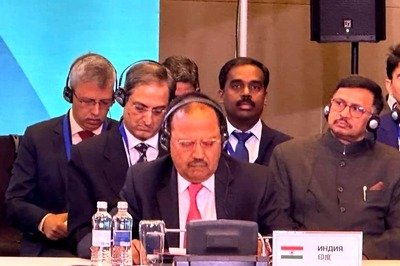
views
Microsoft is counting on Windows 10, launched in July, to help it win a bigger share of the market for tablets and smartphones, now dominated by Apple and Samsung. The launch marks the latest step by chief executive Satya Nadella to build on Windows 10, which Microsoft said was now running on 110 million devices around the world.
"We're moving people from needing to choosing to loving Windows, and these devices promise to fuel even more enthusiasm and opportunity for the entire Windows ecosystem," Nadella said at the event.
"We now begin a new chapter of Windows 10 with new devices built for Windows 10," Nadella said. "What matters most is the mobility of your experience more than the mobility of any specific device."
Microsoft suffered its biggest-ever quarterly net loss in the three months ended June 30 after taking a $7.6 billion writedown on its Nokia handset business. The company had said savings from the restructuring of the business would be pumped into its new flagship operating system, its fast-growing cloud business and its hardware division, which includes Xbox gaming consoles.
Microsoft unveiled a new laptop, a tablet, three phones and a fitness tracker meant to keep people tied to its array of online services. Many of the products have impressive hardware features.
The success of Microsoft's lineup of new devices will ride on the company's ability to convince people who got free Windows 10 software upgrades this summer to spring for new devices — specifically, Windows devices.
Microsoft's Windows operating system has a tiny market share compared with Android and iOS. That means developers tend to focus on making their apps for Android and iPhones first and might not get to Windows at all.
Instead of a "me, too" phone system, Microsoft is touting compatibility with Windows desktops, laptops and tablets. With an optional dock, you can attach a regular monitor, keyboard and mouse and work with apps on the phone just like you would on a Windows 10 desktop. That means you can leave your tablet or laptop at work and have a full desktop experience at home with just the phone. Microsoft is hoping to lure those who use Windows desktops and laptops regularly.
"These are stepping stone devices," Forrester Research analyst Frank Gillett said to Reuters. "Microsoft is trying to demonstrate that it can put out competitive interesting devices with some interesting or unique features."
"What they're really going to be groping for is something game-changing six or 12 months down the line."
Gillett also praised Nadella's emphasis on Windows 10 and the intent behind statements by the Microsoft chief that "devices come and go... you are the hub."
The surprise announcement at the Microsoft Windows 10 devices event was the new Surface Book laptop, Microsoft's first, that runs Windows 10 - and whose 13.5-inch detachable screen can be used like a notepad with a matching stylus.
Microsoft's new Lumia 950 features a 5.2-inch high-definition screen and a 20-megapixel camera, while the Lumia 950 XL has a larger 5.7-inch screen.
Both phones can be connected by a small portable display dock accessory into a personal computer, a large screen or another display device. A keyboard or mouse can be connected, expanding the capacity of a smartphone to operate like a personal computer.
"We want to bring Windows 10 to life in your pocket," said Panos Panay, corporate vice president for Microsoft's Surface division.
Microsoft also launched a third, more modest phone with fewer functions, the Lumia 550.
Other gadgets unveiled included upgraded versions of the Surface Pro tablet, of a wearable fitness tracker and a new HoloLens system that lets users manipulate objects made of light.
.
(With inputs from agencies)




















Comments
0 comment